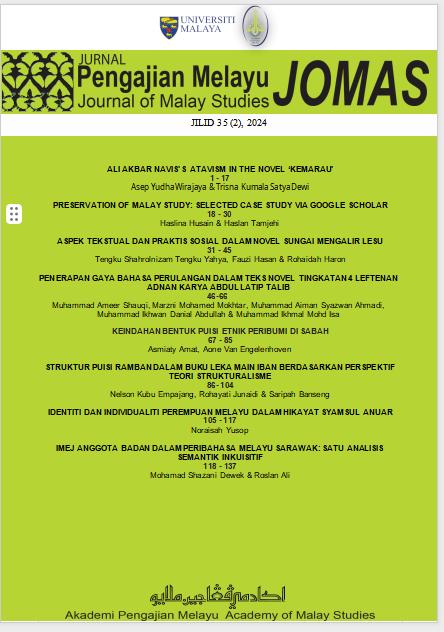ALI AKBAR NAVIS'S ATAVISM IN THE NOVEL ‘KEMARAU ATAVISME ALI AKBAR NAVIS DALAM NOVEL KEMARAU
Main Article Content
Abstract
The problem of development faced by developing countries is that they need to be more focused on economic growth, leading to multidimensional crises, including ecological and prolonged humanitarian crises. The novel ‘Kemarau’ is a sequel to the short stories Datangnya dan Perginya and Robohnya Surau Kami, which effectively capture these issues. This research aims to uncover the theme of atavism in Ali Akbar Navis’ novel ‘Kemarau’. Atavism is a theme that consistently appears in Navis’ works. Navis often portrays the ongoing conflict between tradition and modernity, particularly during colonial and postcolonial periods. With a strong understanding of his cultural background, A.A. Navis successfully presents stories that provoke awareness in readers, whether as individuals, communities, or global citizens, urging them to be directly involved in issues of identity and culture. The research method employed is qualitative, utilizing a literary approach, particularly Paul Ricoeur’s hermeneutic theory. This approach aims to reveal deep and holistic meanings, particularly regarding the character's journey between preserving traditional values and adapting to modernity. Additionally, it exposes the conflict between local traditions and the colonial cultural dominance introduced by colonizers. In doing so, Navis successfully voices the complexity of identity and social change in Indonesia while offering a compelling reflection on the cultural heritage that continues to shape modern society. Furthermore,‘Kemarau’ can also be studied using the paradigms of literary sociology, genetic structuralism, or postcolonialism.

